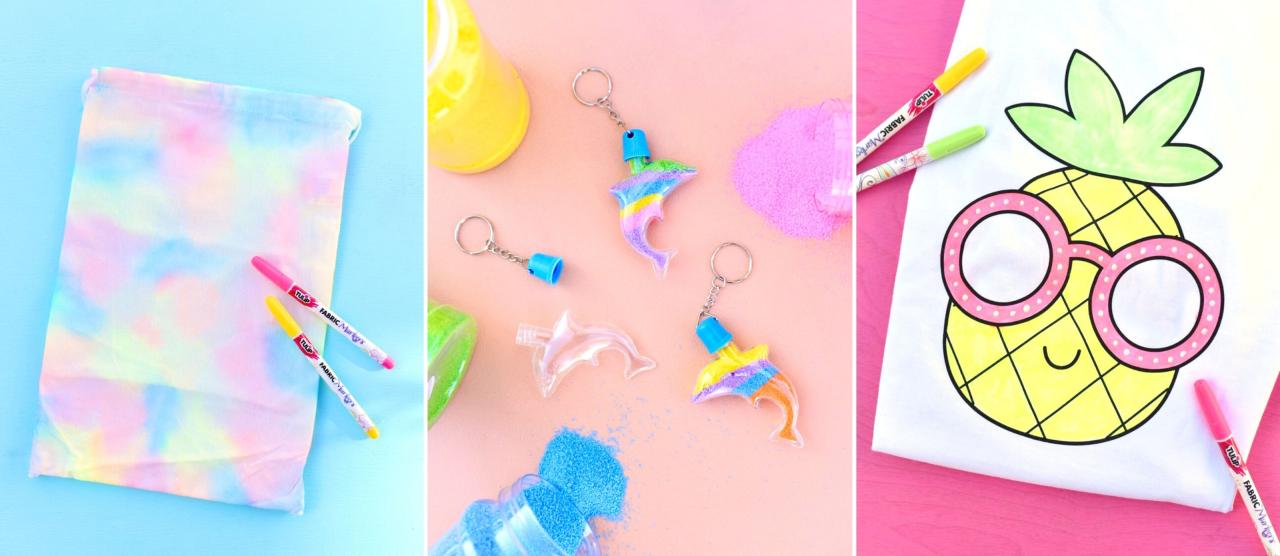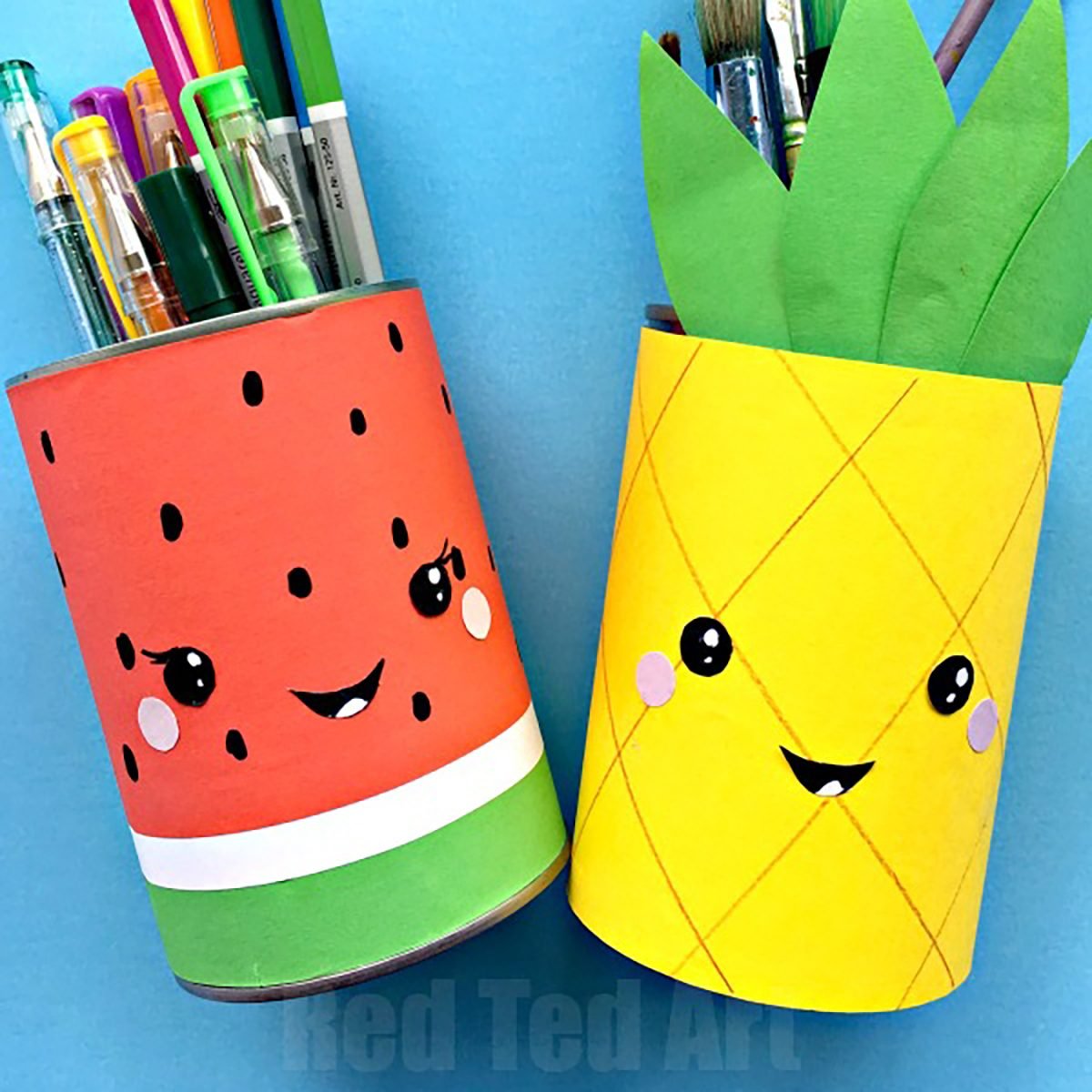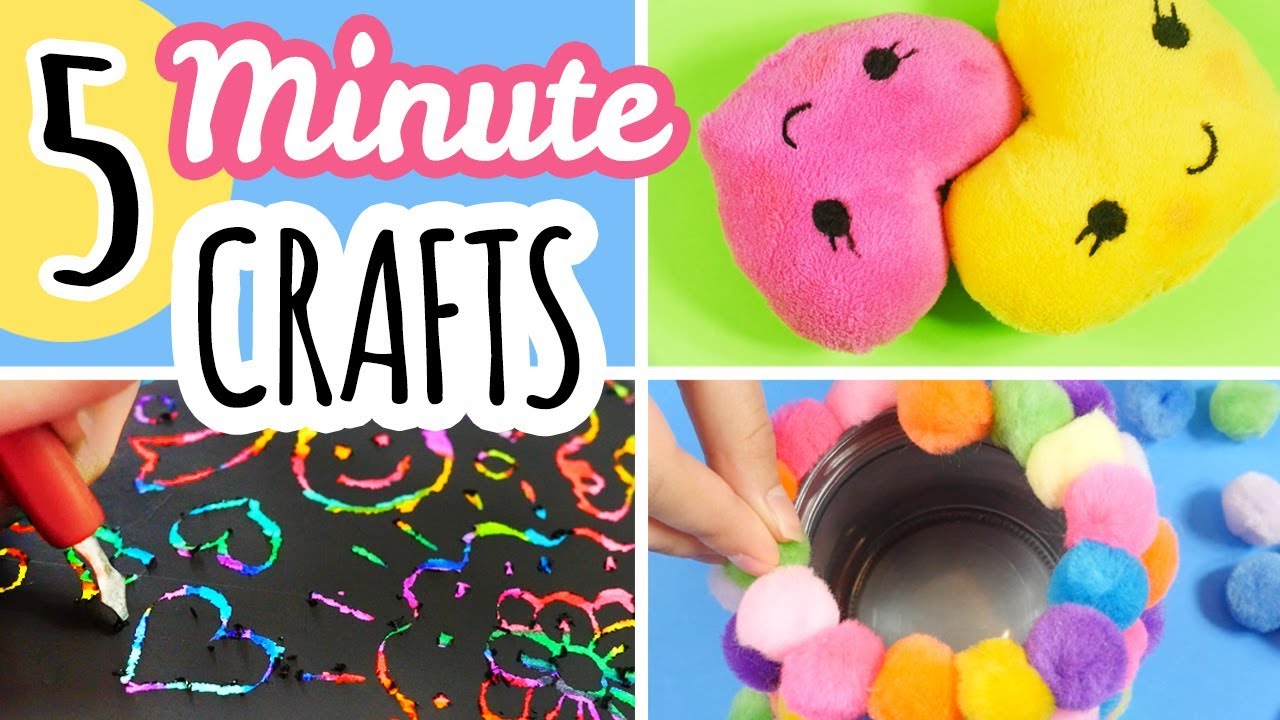Crafts to do sets the stage for a journey of creativity and exploration, inviting you to delve into a world of artistic expression and hands-on skill development. From the ancient art of paper crafts to the modern world of digital artistry, this guide offers a comprehensive overview of diverse crafts, providing inspiration and practical guidance for both beginners and seasoned crafters.
Table of Contents
This exploration delves into the fascinating history and evolution of various crafts, highlighting their cultural significance and impact on society. Whether you seek relaxation through mindful crafting, the thrill of creating something unique, or the satisfaction of mastering a new skill, this guide provides a wealth of information and resources to embark on your own creative journey.
Paper Crafts: Crafts To Do

Paper crafts encompass a wide array of creative activities that utilize paper as the primary medium. From the ancient art of origami to the modern practice of scrapbooking, paper crafts offer a versatile and accessible way to express oneself through artistic endeavors.
History and Evolution of Paper Crafts
Paper crafts have a rich history, dating back to ancient civilizations. The earliest forms of paper crafts involved folding and cutting paper to create decorative elements and functional objects. In China, paper cutting, known as “jianzhi,” emerged as a popular art form during the Tang Dynasty (618-907 AD). In Japan, the art of origami, which involves folding paper into intricate shapes, has been practiced for centuries, with its origins traced back to the 6th century. The invention of the printing press in the 15th century revolutionized paper crafts, enabling the mass production of paper and making it more readily available for creative pursuits. The development of new paper types and printing techniques further expanded the possibilities for paper crafts, leading to the emergence of various forms, including scrapbooking, paper quilling, and cardmaking.
Origami
Origami is the traditional Japanese art of paper folding, involving the creation of intricate three-dimensional shapes and figures by folding a single sheet of paper without cutting or gluing.
Origami involves a series of precise folds, creases, and manipulations to transform a flat sheet of paper into a complex three-dimensional object. The basic folds in origami are:
- Valley fold: A fold that creates a crease that goes inward, forming a valley.
- Mountain fold: A fold that creates a crease that goes outward, forming a mountain.
- Reverse fold: A fold that reverses the direction of a previous fold.
- Squash fold: A fold that flattens a section of the paper by pushing it down.
- Rabbit ear fold: A fold that creates a small flap of paper by folding a corner inward.
These basic folds can be combined in various ways to create a wide range of shapes and figures.
Some popular origami models include:
- Crane: A classic origami model that symbolizes peace and longevity.
- Box: A simple yet versatile model that can be used for storage or decoration.
- Dragon: A complex and impressive model that represents power and strength.
- Flower: A delicate and beautiful model that can be used for decoration or as a gift.
- Airplane: A simple and fun model that is perfect for beginners.
Paper Quilling
Paper quilling, also known as paper filigree, is a craft that involves rolling strips of paper into coils and shaping them into various designs. The coils can be left as simple circles or manipulated into different forms, such as teardrops, crescents, and spirals.
Paper quilling techniques involve:
- Coiling: Rolling strips of paper into coils using a quilling tool or a toothpick.
- Shaping: Manipulating the coils into different forms by pressing, bending, or twisting them.
- Gluing: Adhering the coils together to create intricate designs.
Quilling patterns can be simple or complex, ranging from basic geometric shapes to elaborate floral designs.
Scrapbooking, Crafts to do
Scrapbooking is a craft that involves preserving memories and documenting experiences through the creation of personalized albums or scrapbooks.
Scrapbooking techniques include:
- Choosing a theme: Selecting a theme for the scrapbook, such as a vacation, a birthday, or a specific event.
- Gathering materials: Collecting photos, mementos, and other items that relate to the theme.
- Designing the layout: Planning the arrangement of the photos and other materials on the scrapbook pages.
- Embellishing: Adding decorative elements, such as stickers, ribbons, and embellishments, to enhance the visual appeal of the scrapbook.
Scrapbooking styles can vary greatly, depending on personal preferences and the theme of the scrapbook. Some common scrapbooking styles include:
- Traditional: This style involves using traditional scrapbooking materials, such as photo albums, cardstock, and adhesive.
- Digital: This style involves using digital scrapbooking software to create and design scrapbook pages.
- Hybrid: This style combines elements of traditional and digital scrapbooking.
Scrapbooking embellishments include:
- Stickers: Adhesive paper designs that can be used to add accents to scrapbook pages.
- Ribbons: Decorative fabric strips that can be used for borders, accents, or embellishments.
- Embellishments: Three-dimensional objects that can be used to add texture and interest to scrapbook pages.
- Brads: Small metal fasteners that can be used to attach photos, papers, or other embellishments to scrapbook pages.
- Buttons: Decorative buttons that can be used for accents or embellishments.
Textile Crafts

Textile crafts encompass a wide range of creative activities that involve manipulating fabrics and fibers to create beautiful and functional objects. From the intricate patterns of knitting and crocheting to the delicate artistry of embroidery, these crafts offer endless possibilities for self-expression and artistic exploration.
Knitting and Crocheting Techniques
Knitting and crocheting are two popular textile crafts that involve using needles or hooks to create fabric from yarn. Both techniques have a rich history and offer a wide range of possibilities for creating garments, accessories, and home decor.
- Knitting involves using two needles to create loops of yarn, forming rows of stitches. It is a versatile technique that can be used to create a variety of textures and patterns. Common knitting techniques include:
- Continental knitting: A method where the yarn is held in the left hand and the needles are manipulated with the right hand. This technique is known for its speed and efficiency.
- English knitting: A method where the yarn is held in the right hand and the needles are manipulated with the left hand. This technique is considered more traditional and is often preferred by beginners.
- Double-pointed needles (DPNs): Used for knitting in the round, such as socks or hats. The needles are shorter and have pointed tips for easy manipulation.
- Circular needles: Also used for knitting in the round, these needles have a cable connecting two pointed tips. This allows for seamless knitting without the need to join rows.
- Crocheting involves using a hook to create loops of yarn, forming a chain of stitches. It is a technique that is known for its flexibility and ease of learning. Common crocheting techniques include:
- Single crochet: A basic stitch that creates a dense fabric. It is often used for creating amigurumi, blankets, and other projects.
- Double crochet: A taller stitch that creates a looser fabric. It is often used for creating sweaters, bags, and other projects.
- Treble crochet: An even taller stitch that creates a very loose fabric. It is often used for creating lightweight scarves, shawls, and other projects.
- Tunisian crochet: A technique that uses a special hook to create rows of stitches that are then worked back and forth. It creates a unique textured fabric.
Designing a Crochet Pattern
Designing a unique crochet pattern requires creativity, planning, and a solid understanding of crochet techniques. It is a rewarding process that allows you to bring your own personal style to your projects.
- Choose a project: Start by deciding what you want to create. Consider the size, shape, and purpose of your project. This will help you determine the yarn weight, hook size, and stitch patterns you will need.
- Create a sketch: Draw a rough sketch of your project to visualize the overall design. This will help you determine the dimensions, shape, and any unique features you want to incorporate.
- Choose a stitch pattern: Select a stitch pattern that will create the desired texture and look for your project. Consider using a combination of different stitches to add variety and interest.
- Write the pattern instructions: Once you have finalized your design, write down the pattern instructions in a clear and concise manner. Include details such as the yarn weight, hook size, stitch counts, and any special techniques required.
- Test your pattern: Before sharing your pattern with others, test it out by crocheting a sample. This will help you identify any errors or inconsistencies in the instructions.
Essential Sewing Tools and Techniques
Sewing is a fundamental textile craft that involves using a needle and thread to join fabric pieces together. It is a versatile technique that can be used for a wide range of projects, from simple repairs to intricate garments.
- Essential sewing tools:
- Sewing machine: A versatile tool that allows you to sew fabric pieces together quickly and efficiently. Choose a machine that is suitable for your needs and skill level.
- Scissors: Use sharp scissors specifically designed for fabric. Avoid using household scissors as they can dull the fabric.
- Measuring tape: Use a flexible measuring tape to accurately measure fabric and garment dimensions.
- Pins: Use pins to hold fabric pieces together before sewing. Choose pins with sharp points and smooth heads to prevent snagging the fabric.
- Thread: Choose thread that is the same color and weight as your fabric. Use a thread that is strong enough to hold the fabric pieces together securely.
- Needles: Use needles that are appropriate for the type of fabric you are sewing. For delicate fabrics, use a fine needle. For thicker fabrics, use a heavier needle.
- Iron: Use an iron to press seams and create a crisp finish. Make sure to use the appropriate temperature setting for your fabric type.
- Basic sewing techniques:
- Straight stitch: A basic stitch that is used to join fabric pieces together. It is the most common stitch used in sewing.
- Zigzag stitch: A stitch that is used to finish raw edges of fabric to prevent fraying. It can also be used for decorative purposes.
- Backstitch: A stitch that is used to reinforce seams. It creates a stronger and more durable seam.
- Buttonhole stitch: A stitch that is used to create buttonholes. It is a decorative stitch that can add a touch of elegance to your projects.
- Gathering stitch: A stitch that is used to gather fabric. It is used to create fullness in garments and other projects.
The Art of Embroidery
Embroidery is a textile art that involves using a needle and thread to create decorative designs on fabric. It is a time-honored tradition that has been practiced for centuries around the world.
- Embroidery stitches:
- Backstitch: A simple stitch that is used to create straight lines. It is a versatile stitch that can be used for Artikels, lettering, and other details.
- Running stitch: A stitch that is used to create a continuous line. It is often used for outlining shapes and filling in areas.
- Satin stitch: A stitch that is used to create smooth, solid areas of color. It is often used for filling in shapes and creating flowers.
- French knots: Small, decorative knots that are used to add texture and dimension to embroidery designs.
- Stem stitch: A stitch that is used to create stems, vines, and other elongated shapes. It is a versatile stitch that can be used for both Artikels and filling.
- Embroidery styles:
- Crewel embroidery: A style of embroidery that uses wool yarn to create intricate designs on linen fabric. It is known for its rich colors and detailed patterns.
- Blackwork embroidery: A style of embroidery that uses black thread to create geometric patterns on white fabric. It is known for its simplicity and elegance.
- Goldwork embroidery: A style of embroidery that uses gold thread to create elaborate designs. It is often used for religious and ceremonial garments.
- Cross-stitch embroidery: A style of embroidery that uses X-shaped stitches to create patterns. It is a popular technique for creating images and designs.
Closing Notes

As you venture into the world of crafts, remember that the most important ingredient is your passion. Experiment with different techniques, explore new materials, and let your creativity flourish. Whether you choose to create intricate origami, paint vibrant landscapes, or craft intricate jewelry, the journey of crafting is a rewarding one, filled with endless possibilities for self-expression and artistic fulfillment.
Whether you’re into painting, knitting, or woodworking, crafts offer a fantastic way to unwind and express your creativity. But managing your digital tools is just as important, and that’s where comodo one rmm comes in. This powerful remote monitoring and management solution helps you streamline your IT operations, ensuring your devices are secure and efficient.
Once you’ve got your tech under control, you can focus on crafting those masterpieces!
